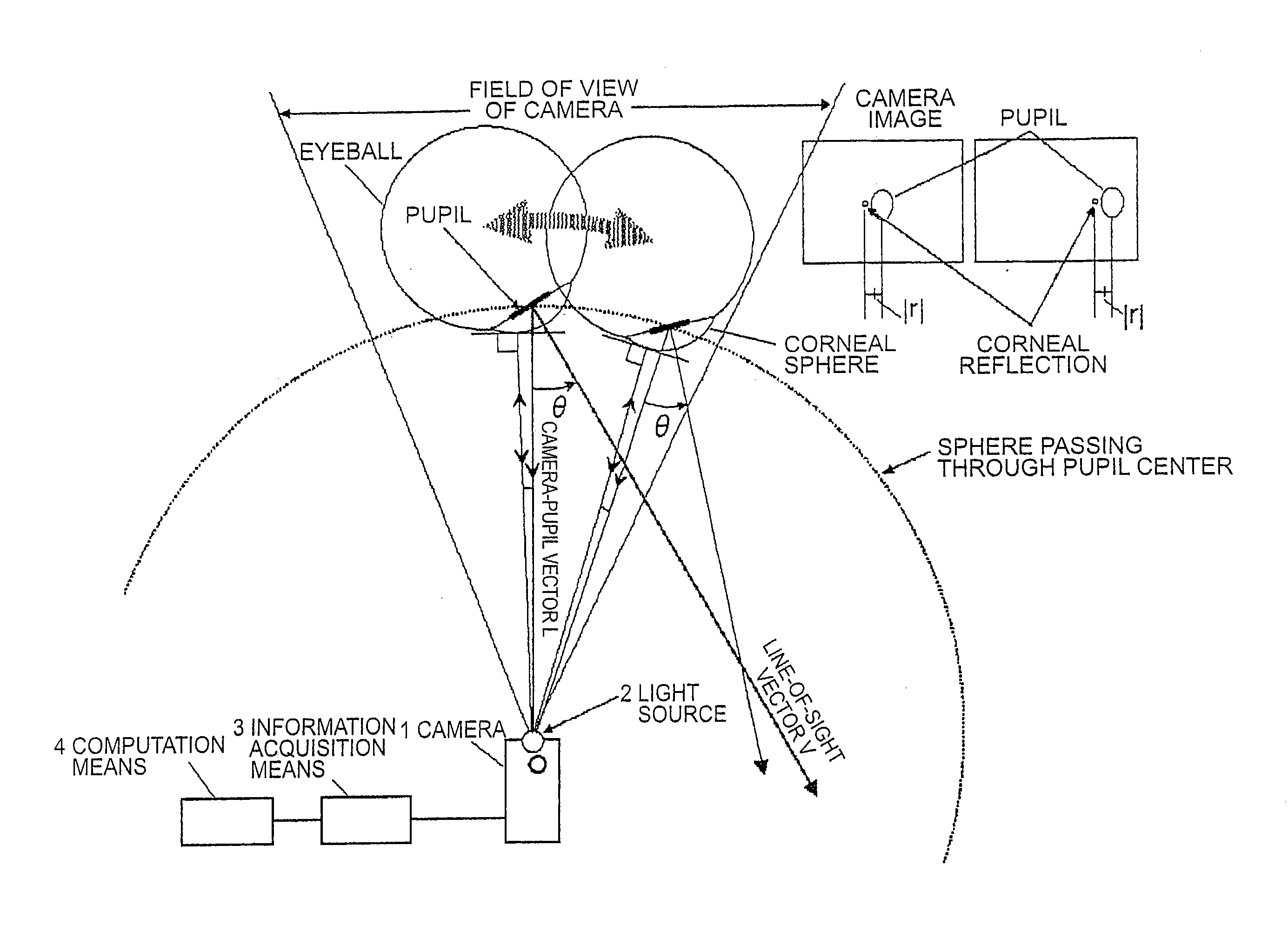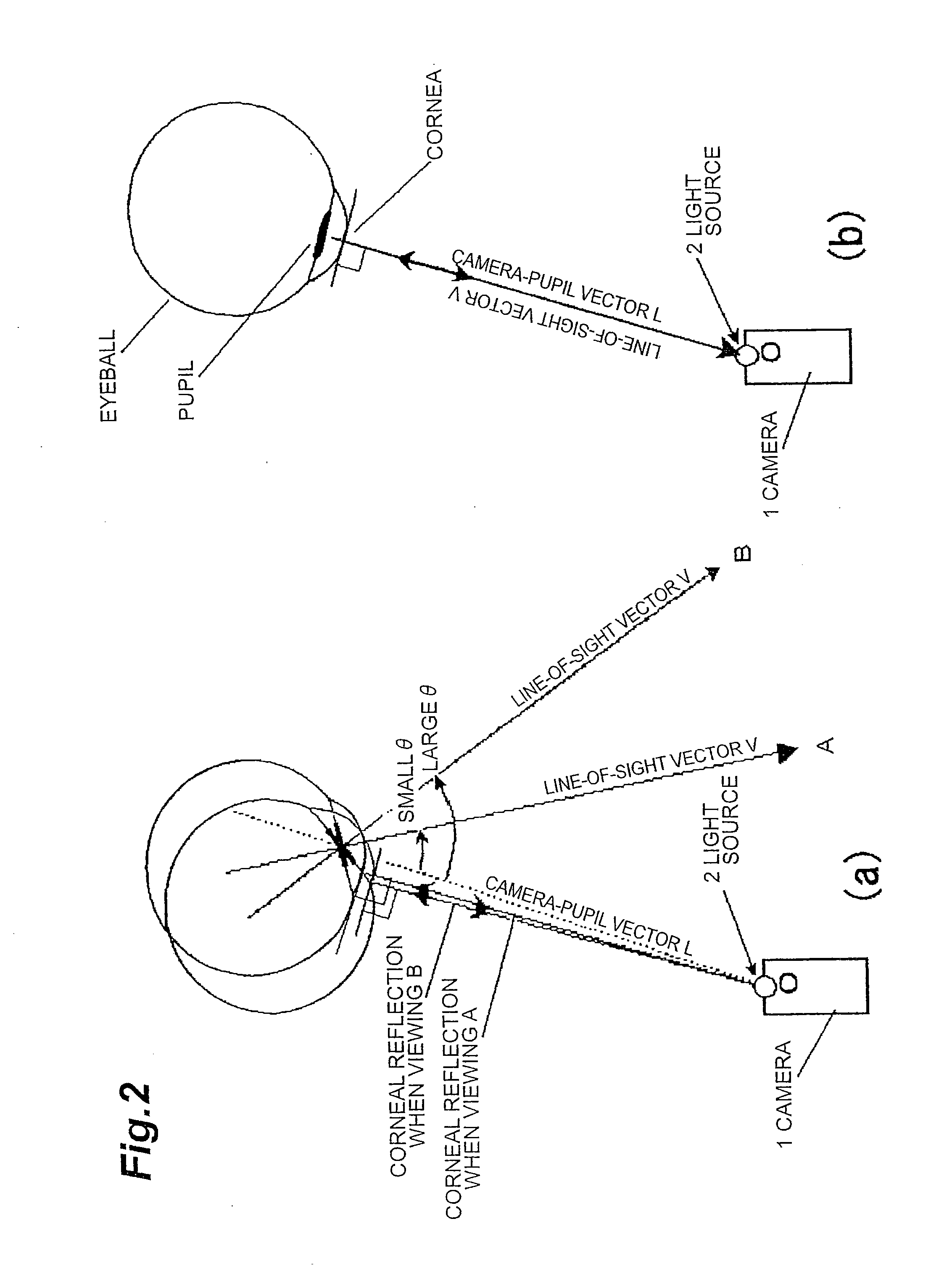Eyeshot detection device using distance image sensor
a detection device and distance image technology, applied in the field of eyeshot detection devices using distance image sensors, can solve the problems of cumbersome camera calibration of stereo cameras, and the inability to accurately measure the distance to the pupil using a tof (time of flight) method using such an ultrasonic wave, and achieve the effect of responding quickly
- Summary
- Abstract
- Description
- Claims
- Application Information
AI Technical Summary
Benefits of technology
Problems solved by technology
Method used
Image
Examples
embodiment
[0025] It is assumed, as shown in FIG. 5, that the camera (1) and the light source (2) are arranged at origin O of the camera coordinate system, which is known in advance, and one or two eyes' image have been taken by the camera. Now, in an eye's image taken as shown in FIG. 6(a), the computation means (4) detects a pupil and corneal reflection based on image processing and determines respective center coordinates. The computation means (4) calculates a size |q| of a vector q connecting from coordinates corresponding to the camera optical axis in the image to the pupil center, an angle η′ formed by the vector and the horizontal axis, and three-dimensional coordinates of the pupil center from a distance L between the camera and pupil center measured by the camera (1). Here, the position angle ξ of the pupil center viewed from the camera (1) is in a monotone increasing relationship to |q| If this relationship can be represented by ξ=g (|q|) using a function g and the function g is kno...
PUM
 Login to View More
Login to View More Abstract
Description
Claims
Application Information
 Login to View More
Login to View More - R&D
- Intellectual Property
- Life Sciences
- Materials
- Tech Scout
- Unparalleled Data Quality
- Higher Quality Content
- 60% Fewer Hallucinations
Browse by: Latest US Patents, China's latest patents, Technical Efficacy Thesaurus, Application Domain, Technology Topic, Popular Technical Reports.
© 2025 PatSnap. All rights reserved.Legal|Privacy policy|Modern Slavery Act Transparency Statement|Sitemap|About US| Contact US: help@patsnap.com



